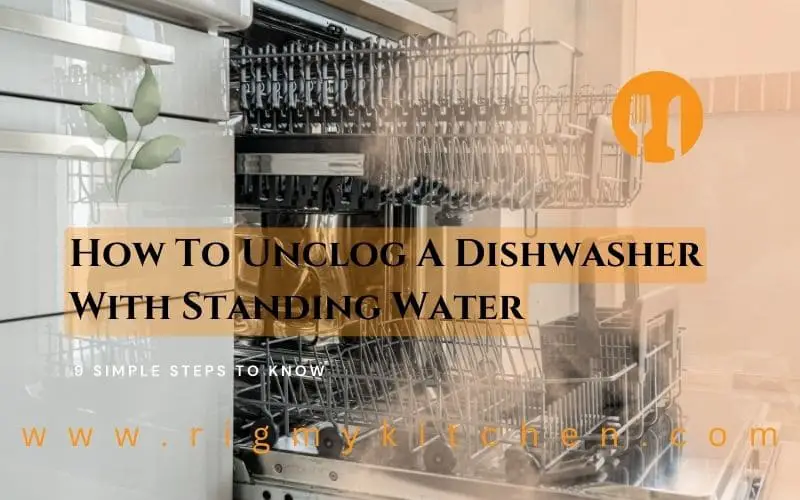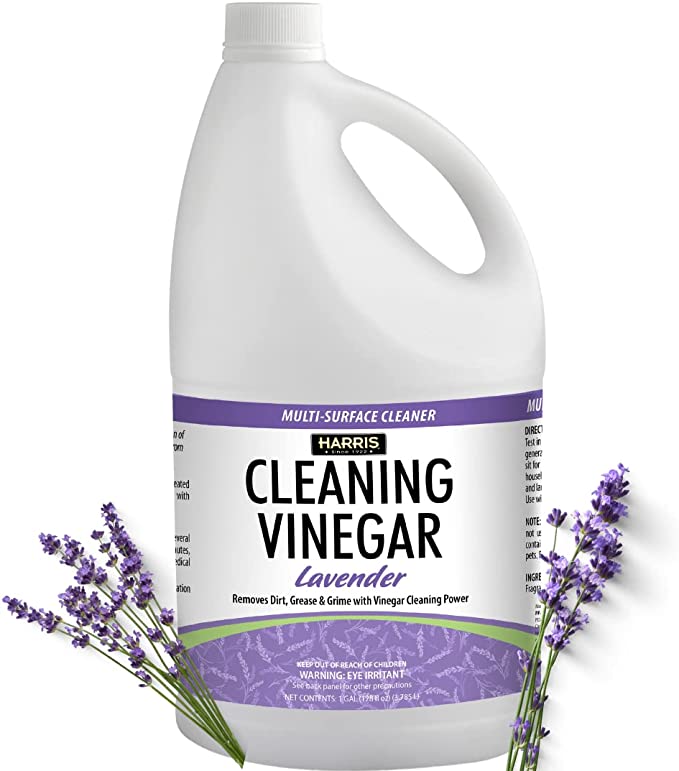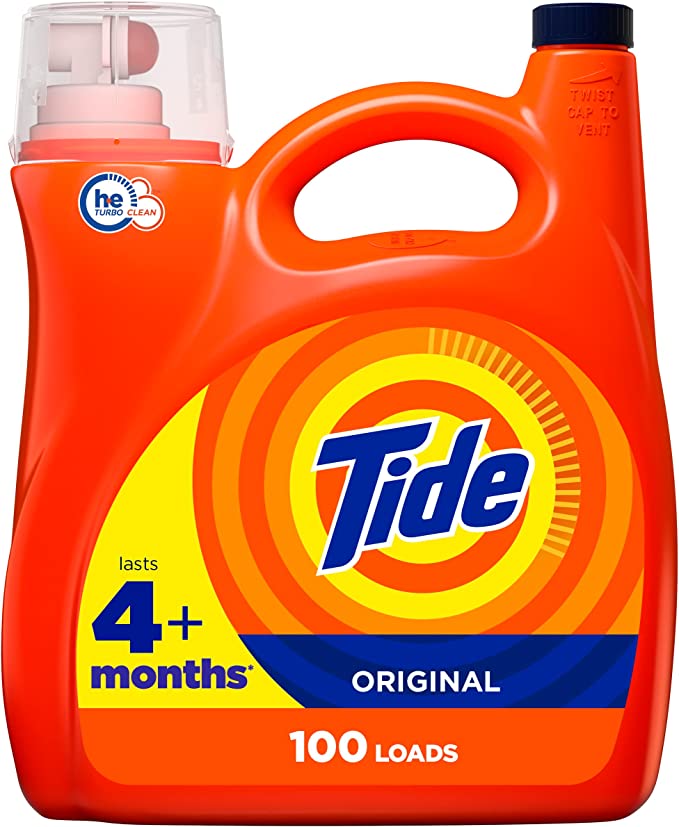A dishwasher is essential for any household. When it starts acting funny, it impacts our kitchen hygiene. One of the most common occurrences you’ll notice with your dishwasher is when you find more standing water than usual after a cycle. This is an indication for an appliance repair and to update your plumbing maintenance. How to unclog a dishwasher with standing water is something you can attempt to accomplish on your own.
It’s rather frustrating when an appliance like a dishwasher that you use daily malfunctions. The standing water might seem normal, but if it creates a puddle, then you need to go in for the dishwasher clog removal process. Fear not, it is not as time consuming as you might think, nor will it break your wallet. With household ingredients and resources you can make a cleaning solution and keep your dishwasher maintenance up to date.
Why Does Standing Water Accumulate At The Bottom Of The Dishwasher?
After a cycle, water may collect at the dishwasher’s base and fail to drain properly. This is both annoying and unhygienic. After all, no one wants old, muddy water spinning around beneath pristine dishes, which would in fact, dirty your dishes even more. A dishwasher with standing water can be caused by a variety of factors, including food getting clogged in the drain, not emptying the drain, a stuck drain valve, an air gap in the garbage disposal, and a clog in the drain line.
Why is standing water unsanitary?
Standing water is also known as stagnant water. This standing water serves as a breeding ground for a variety of insects, and the area is more likely to attract pests. Insects invading your home are not only an unpleasant occurrence but also a major threat to your health, safety, and kitchen hygiene. They can spread infections and bacteria, putting your entire family at risk of health complications like food poisoning and other illnesses.
Additionally, insects would eventually take over your kitchen, your food supply, and other equipment, putting you at a loss of resources, money, and needing the help of more professional cleaning services. Furthermore, standing water can encourage the growth of mold and mildew inside your home, like dark-colored spores on the floor, walls, ceiling, and appliances. Mold will most likely grow in standing water in the dishwasher, especially if there is leftover food.
So, a repair is required if you discover standing water at the bottom of your dishwasher. While there are numerous reasons why the water in your dishwasher won’t drain completely, the majority of it can be fixed by taking some steps that you can do on your own with help from the dishwasher’s user manual.
Dishwasher Troubleshooting Step-by-step
Follow these dishwasher troubleshooting steps before calling a professional:
Step 1: Turn the power off
Water in any form is dangerous when combined with electricity and puts you at risk of electrocution. So, before doing anything to your dishwasher, make sure it is completely turned off, either by unplugging the machine or by switching off the circuit in the electrical panel.
Step 2: Remove as much water as you can
Start by placing towels under the dishwasher. Then, remove the standing water with a large cup, ladle or bowl. When the standing water is too shallow to scoop out, use a dry towel or paper towels to soak up the rest of the water.
Step 3: Check the drainage system
Standing water in a dishwasher is typically caused by food particles being blocked in the drain and due to clogged filters. Check the dishwasher drain and clean the drain basket around the lower sprayer arm with a wire hanger to remove any debris or clogs.
Step 4: Check the drain pump
Broken glass, leftover food particles, grease and other debris can sometimes hinder the drain’s two impellers from moving. This causes water to accumulate. Remove any debris that may be causing these blockages.
Step 5: Check the sprayer arm
Remove the sprayer arms from the bottom of your dishwasher. Check for food particles and clean the holes with a wire hanger. Set the arms aside after rinsing them with warm water and removing any remaining food. If necessary, use equal parts of vinegar and baking soda for cleaning and rinsing.
Step 6: Check the dishwasher filter
You might not know it but a dishwasher has a filter that needs to be cleaned on a regular basis. Refer to your dishwasher’s user manual to locate the dishwasher filter and then proceed to removing it. Rinse the screen with water and use a damp sponge to clean the surrounding area.
Step 7: Straighten the drain hose
Look under the sink for the dishwasher drain hose, which is usually held up by clips or screws. Older drain hoses are prone to bending which can lead to obstructions. Such obstruction can hamper waterlow and prevent particles from moving. If the drain hose is bent, gently straighten them out.
Step 8: Run the garbage disposal
An air gap in a connected hose may prevent water from draining. If this happens, remove the drain hose where it attaches to the garbage disposal and use a flat-head screwdriver to clean any clogs.
Step 9: Run a full cycle
To ensure that your dishwasher drains properly after all the steps you’ve taken, turn the power back on and run a complete dishwashing cycle. When the cycle is finished, check to see if there is any water left in the bottom of the dishwasher. If you still see an unusually large amount of standing water in your dishwasher, then you have done all you can. It’s time to call in professional help.
Unclogging Dishwasher With Vinegar And Baking Soda
If you’re looking for an easier way to unclog the dishwasher, a DIY cleaning solution made of vinegar and baking soda is the way to go. For this you’ll need vinegar, baking soda, and a wire.
Start by pouring 1 cup or baking soda down the dishwasher drain followed by 2 cups of vinegar. The mixture will start bubbling so, give it a few minutes to stop doing so. Then, use a wire to loosen any debris or get rid of any food particle which might be obstructing the drain. Afterwards, run a cycle and check if that has solved your issue of standing water.
Preventing Standing Water In Your Dishwasher
There are some things you can do and signs you can look out for to prevent the accumulation of standing water. These are:
Using the proper detergent
Different dishwashers require different detergents. To avoid clogging the drain, use the correct detergent for your dishwasher – pods, powder, or liquid detergent. To find out which is ideal for your machine, consult the user manual.
Loading the dishwasher properly
When you don’t lead the dishes properly, it makes it more difficult for water to drain throughout a full wash cycle. In general, cups and small bowls should be placed in the top rack, utensils in the silverware holder, and plates and large bowls in the bottom rack.
Keeping an ear out for unusual noises
If you hear humming or clicking sounds during a wash cycle, it is an early sign of an underlying issue like maybe the drain pump and motor need to be replaced. Because these parts are critical to preventing standing water in your dishwasher, you should check on them immediately.
A dishwasher is an essential machine in the kitchen. It makes the task of cleaning dishes easier and helps maintain kitchen hygiene. However, when a clog arises, the dishwasher doesn’t work right and becomes a worry for us. Sometimes, it even creates extra work and cleaning up to do. The process of how to unclog a dishwasher with standing water is something we all should know and have knowledge about.
It not only makes the job of appliance maintenance and kitchen hygiene easier but also helps reduce extra costs on cleaning. Therefore, before you panic and call in professional help or consider buying a new one, try the above mentioned steps to remove your clog and keep your dishwasher healthy.
FAQs on How To Unclog A Dishwasher With Standing Water
What are some signs that your dishwasher is clogged?
Unusual amounts of water accumulated at the bottom after a cycle or standing water, humming or clicking noises during a cycle, dishes coming out dirty, slow water drainage, and water backing up into the kitchen sink are some common signs that your dishwasher is clogged.
What causes a dishwasher to become clogged?
Clogs in the dishwasher filter and debris accumulation in the drainage system can cause a dishwasher to become clogged. These clogs often build up over time due to leftover food particles and debris.
Can a plunger be used to unclog a dishwasher?
Using a clean and disinfected sink plunger, you can use it to unclog the dishwasher by covering the entire drain hole with it. By plunging, the suction effect will unclog any debris that is stuck in the drain. However, you’ll have to take apart your entire dishwasher before you can do this, and you ought to stop immediately if it does not appear to work.
What are some natural ingredients that can be used to unclog the dishwasher?
Natural ingredients often do not produce an effective cleaning solution. However, a mixture of baking soda and vinegar is bound to do the trick.
When should you call a professional plumber to unclog the dishwasher?
When you’ve checked for clogs, cleaned out any debris that might be hampering the functionality of your dishwasher and you still notice that it’s not working properly, it’s time to call in a professional.
Final Verdict
It not only makes the job of appliance maintenance and kitchen hygiene easier but also helps reduce extra cleaning costs. Therefore, before you panic and call in professional help or consider buying a new one, try the above mentioned steps on ‘How to unclog a dishwasher with standing water’ to remove your clog and keep your dishwasher healthy.
Want to know How To Clean Dishwasher Drain Hose Without Removing It. Read 6 actionable steps to our blog
Spread the joy with others



Written By Jeanette Wilson
Jeanette Wilson has spent the last 12+ years designing, testing, and improving kitchen gadgets and appliances. She also knows her way around a home and professional kitchen, as she is a passionate home cook and runs her own roadside eatery.